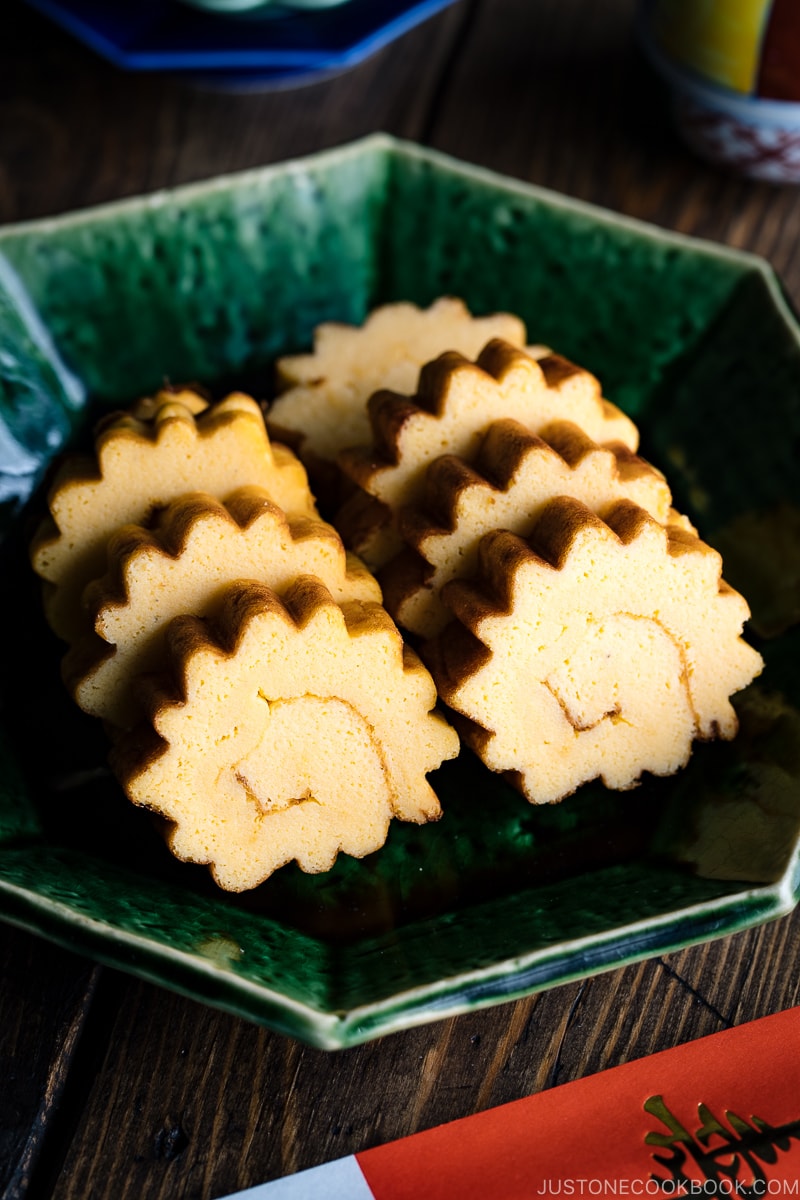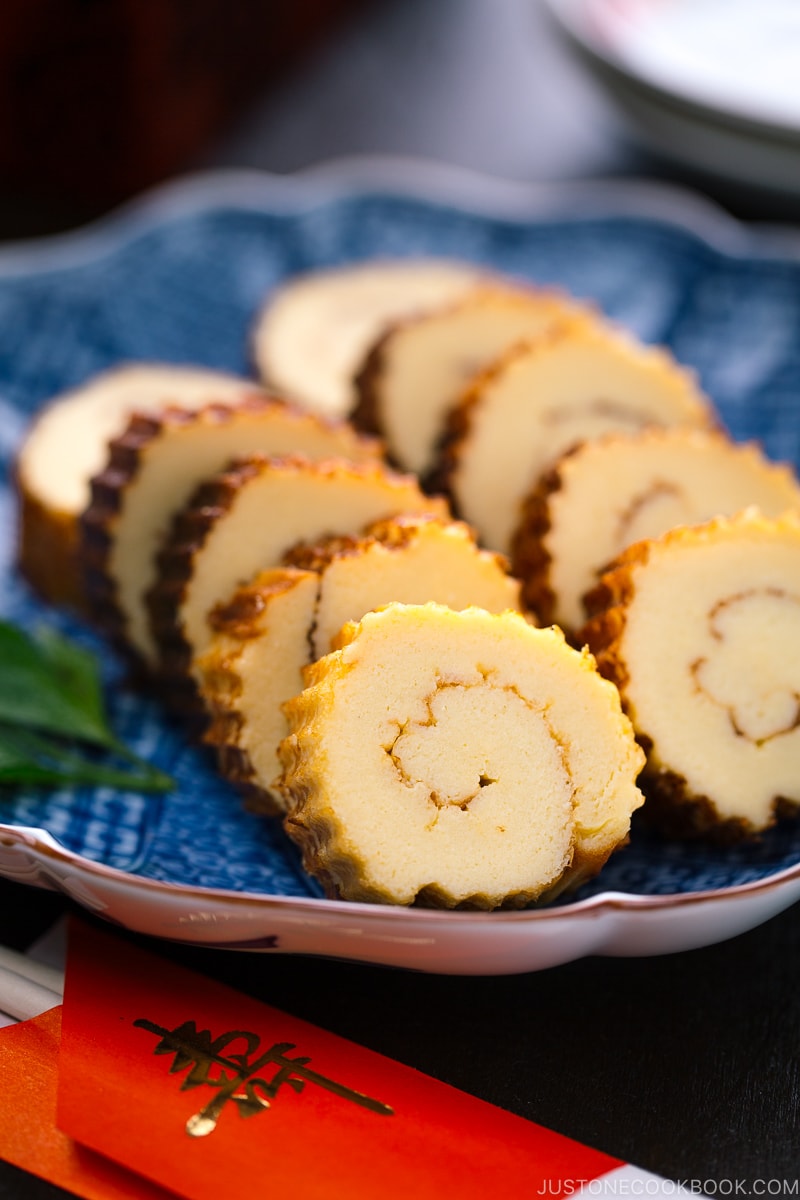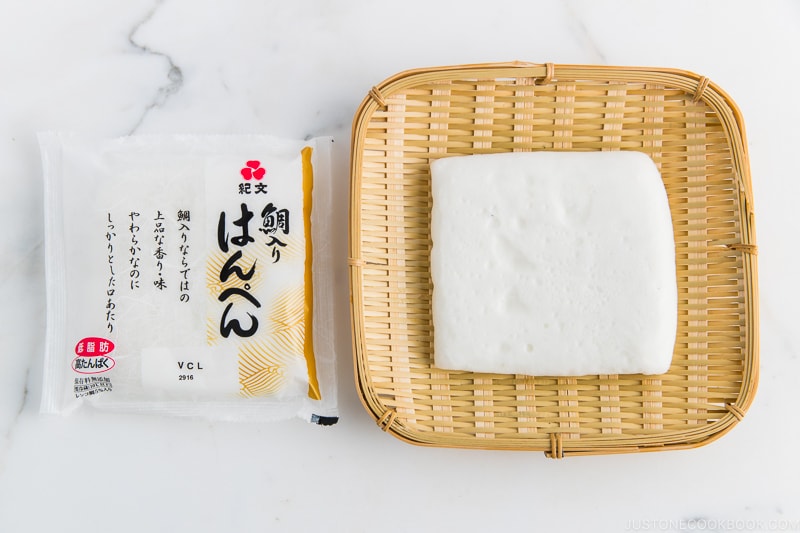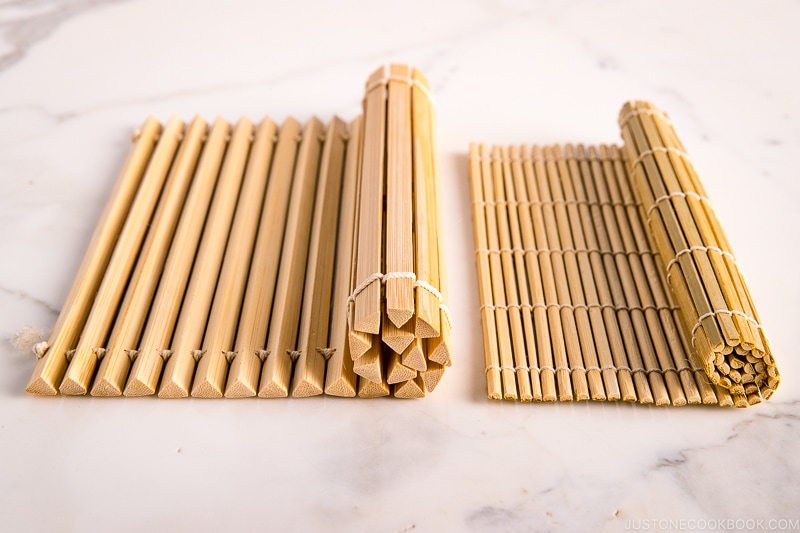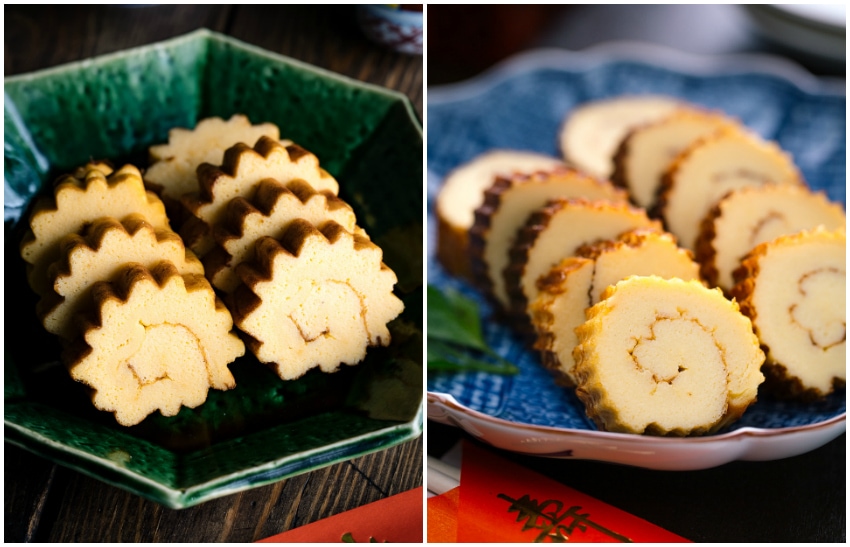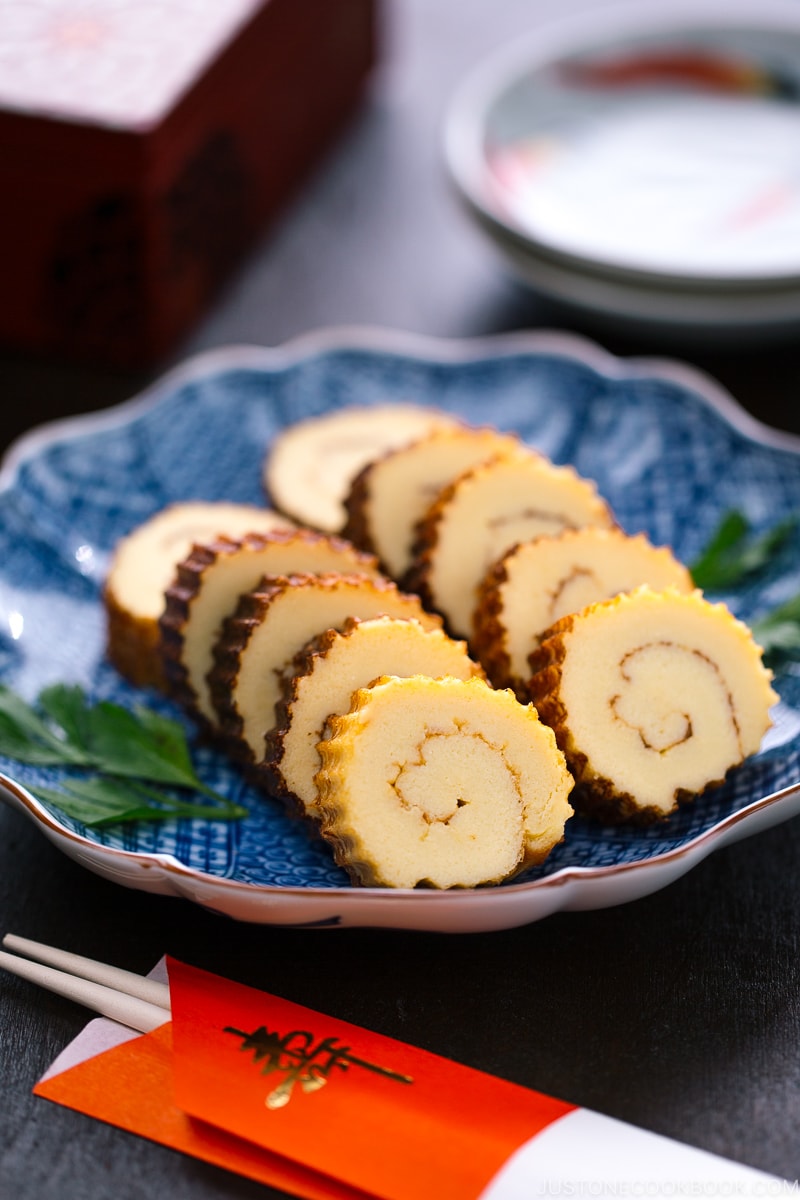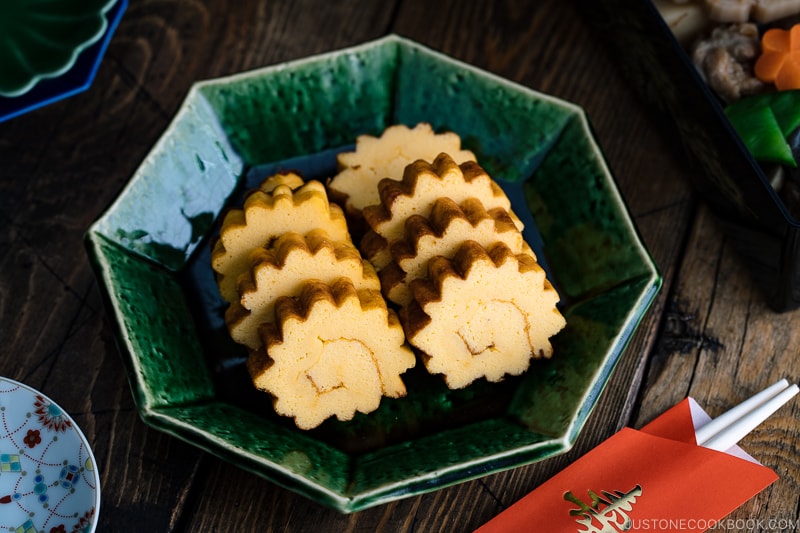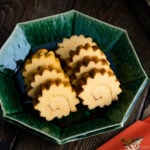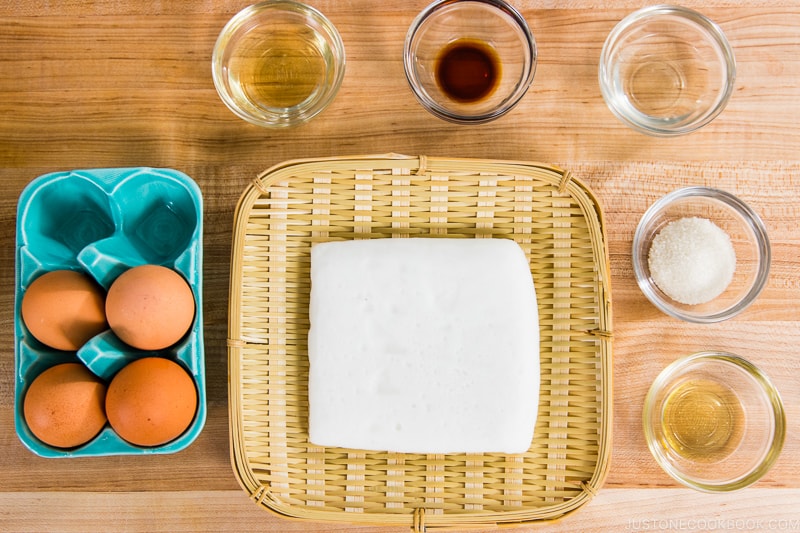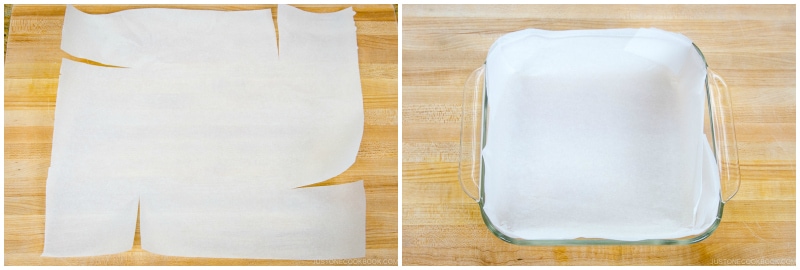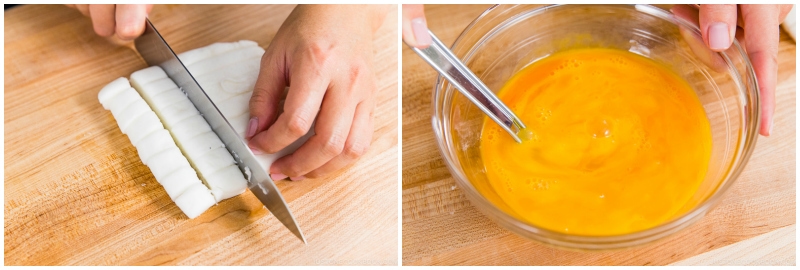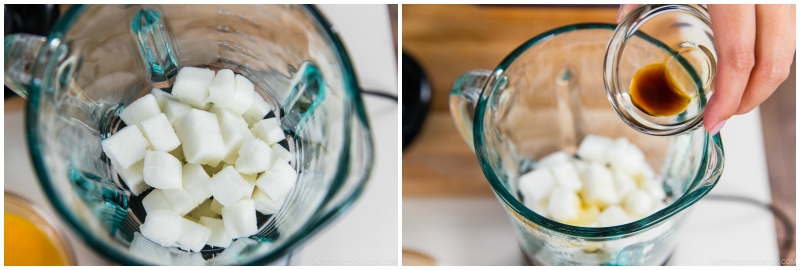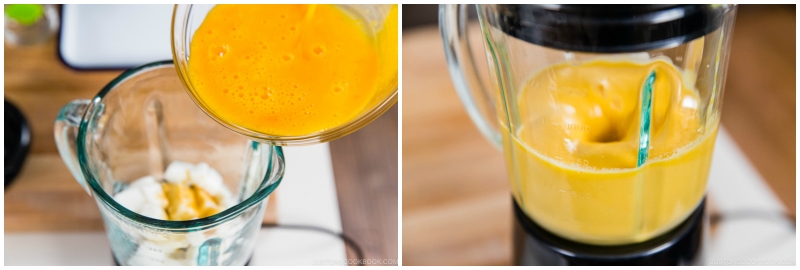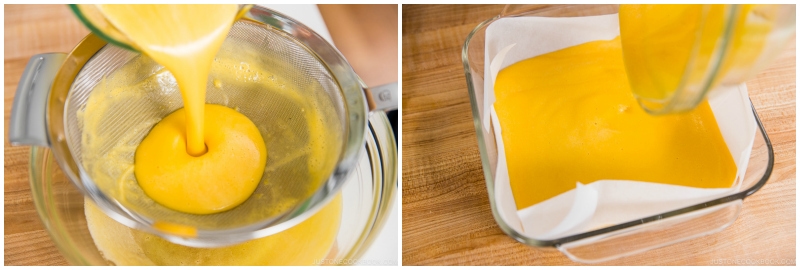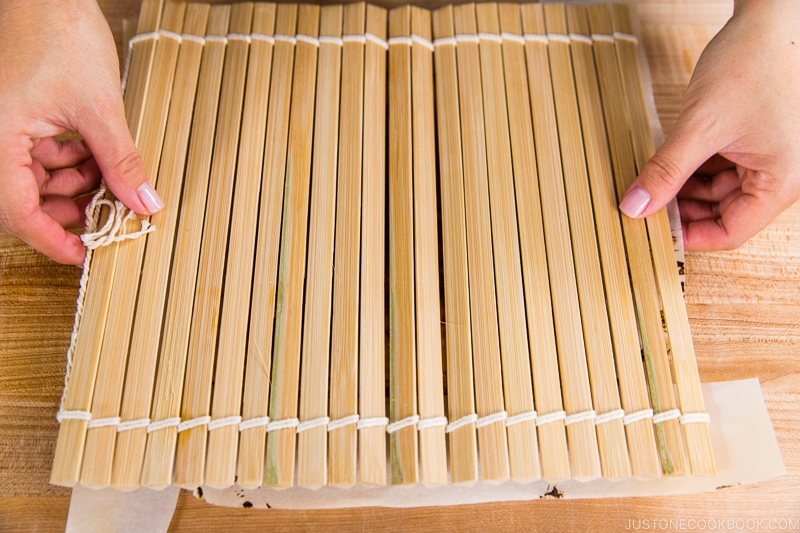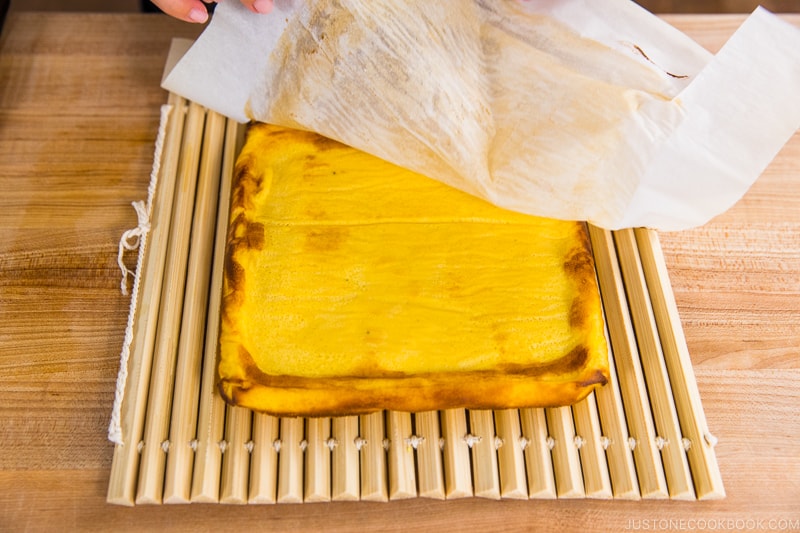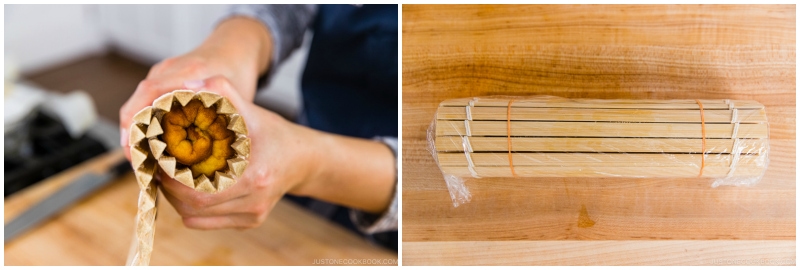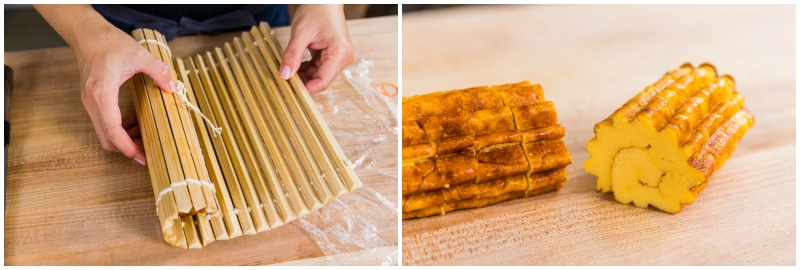Datemaki (伊達巻) is a traditional sweet rolled omelette typically eaten as part of Japanese New Year’s food (osechi ryori, 御節料理). Served in a lacquered jubako (special square boxes similar to lunch boxes), it is made with eggs mixed with fish or shrimp paste and sweetened with sugar and mirin. Among all the dishes for osechi ryori, datemaki often stands out for its bright sunny color and unique shape. It is by far my favorite dish among the new year foods and I always look forward to eating it every year. The sweet and savory flavor and almost cake-like texture make it a popular choice for the whole family! You can often find pre-made datemaki being sold at Japanese grocery stores during this time of the year, but it is really easy to make it from scratch. I’ll show you how to achieve the perfect datemaki at home.
What is Datemaki
Datemaki is a must-have New Year’s food in Japan. It is similar to Tamagoyaki as both are rolled omelets with similar ingredients. The main difference is datemaki features a type of white fish cake called hanpen. Hanpen is made from grated Japanese yam (yamaimo) and surimi (Alaska Pollock), salt, and kombu dashi. It adds a unique flavor and a fluffy texture to the egg omelette, like a soft fish cake. There are also other differences between datemaki and tamagoyaki:
Instead of cooking on a pan over the stove, datemaki is baked in the oven in a single layer before being rolled into a cylinder and sliced. Just like baking a cake! Compared to tamagoyaki, datemaki is a little sweeter and is usually eaten only for the New Year.
The Symbolic Meaning of Datemaki
There are many different theories behind the symbolism of datemaki, but it is most commonly believed that eating datemaki will bring a good year of wisdom and learning, and success in studies (especially for student life). The rolled shape of datemaki is reminiscent of a scroll, which is historically a symbol of knowledge. When I was a student, my mom would make sure that my brother and I had our good share of datemaki. Another story was that the rolled fish cake omelet looked like a colorful kimono that fashionable people wore during the Edo period. As the word “date” refers to the sash for Japanese kimono and ‘maki’ means rolled, this is where the omelet got its name from.
Ingredients You’ll Need to Make Datemaki
Eggs Hanpen fish cake – You should be able to find hanpen in the freezer section at most Japanese grocery stores. Alternatively, you can substitute it with pureed white fish, scallops, or shrimp. Mirin Sake Sugar – Datemaki is meant to be sweet, but you can cut down the sugar slightly if you prefer. Honey Soy sauce
Many datemaki recipes require dashi, but I find it not necessary as hanpen is made of kombu dashi and it already adds a nice flavor to the omelette. Of course, you can always add dashi if you like. After blending all the ingredients for the egg mixture, it is then baked until firm and nicely browned on the outside.
Helpful Tool to Roll the Omelette
You have probably seen or used makisu (巻き簀), a bamboo mat, to roll sushi or stabilize the shape of Tamagoyaki. For the decorative purposes, we use this special bamboo mat called onisudare (鬼簾, 鬼すだれ) for datemaki. This rolling mat has deep notches that gives the signature zigzag marks on the surface of the omelet. If you don’t have onisudare, you can still use a regular bamboo mat to give a similar effect to datemaki. The ridges are less striking but they still look pretty (see the right picture below).
Quick Tips For Making Datemaki
Strain the egg mixture through a fine sieve will yield a smooth, airy, and fluffy texture. The final texture of datemaki should be tender and moist in the middle and the top golden brown. Watch your oven toward the end of baking. If the top is not golden brown, switch to a broiler and broil for 2 minutes. Roll the omelette while it is still hot and gently score the omelet before you roll. This will help the omelette roll up easily without cracking.
Perfect Make-Ahead Dish for Osechi
Datemaki is meant to be served at room temperature. Since it stores well in the refrigerator for 4-5 days, you can slice it and keep them in an airtight container or reusable plastic bag.
More Easy Japanese New Year Recipes
Tazukuri (Sweet Soy Glazed Sardines) Instant Pot Kuromame (Black Soy Beans) Sekihan (Red Bean Rice) Namasu (Daikon & Carrot Salad) Yellowtail Teriyaki Butter Shoyu Scallops Inari Sushi
Wish to learn more about Japanese cooking? Sign up for our free newsletter to receive cooking tips & recipe updates! And stay in touch with me on Facebook, Pinterest, YouTube, and Instagram. Editor’s Note: This post was originally published on Dec 26, 2013. The pictures have been updated in December 2019. The post has been republished on December 2023.
